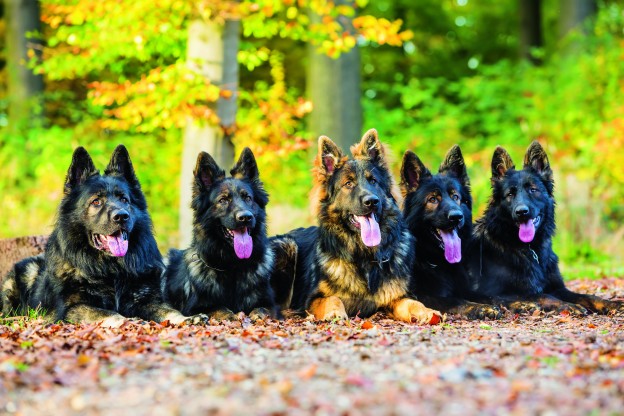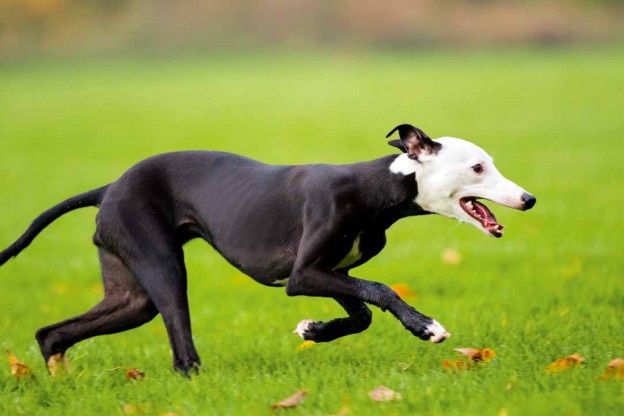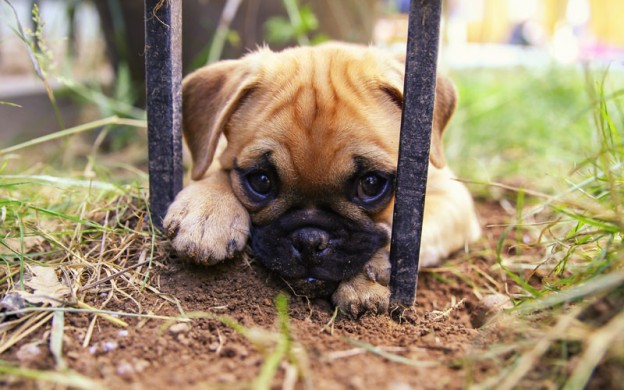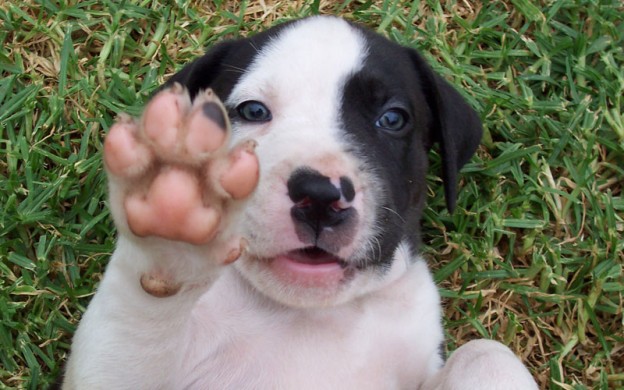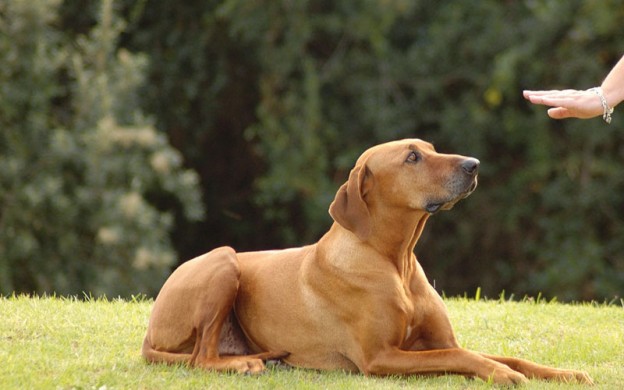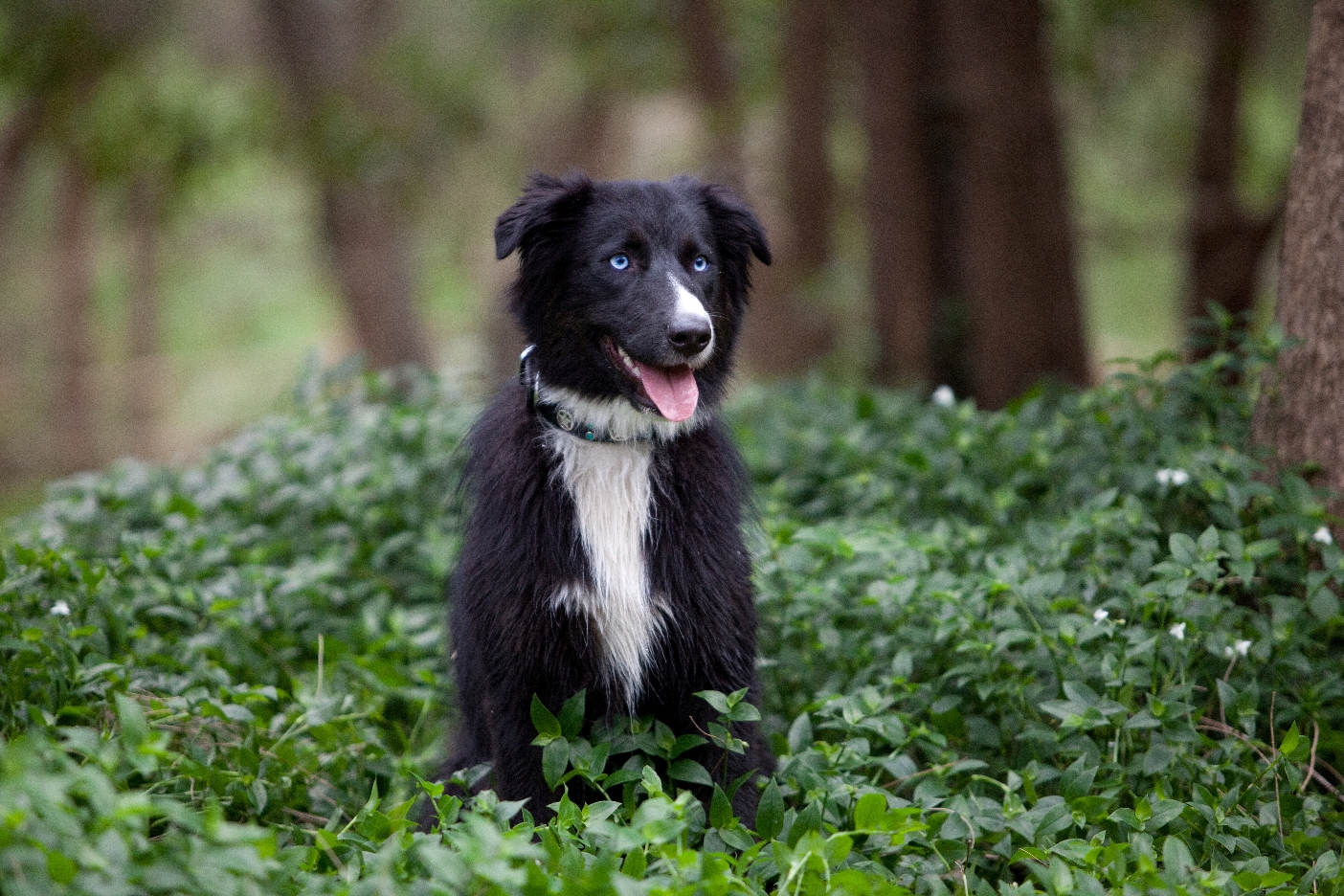
Ever feel like you’re living with a furry whirlwind? Krissy Bradfield reveals how to reinstate calm dog behaviour.
Vicki Miller knows what it’s like to live with an energetic dog. After adopting Bo, her Border Collie-cross, she quickly found that nothing would wear him out.
“I exercised Bo for an hour in the morning and another hour in the afternoon — more on weekends — wearing myself into the ground and getting him even fitter,” Miller says. “These walks were not pleasant. I was basically being pulled for an hour solid, two times a day.”
It became apparent that nothing Miller tried was working, so three months later she made the decision to take Bo back to the shelter. “Returning Bo to rescue several months and two trainers later was a devastating decision to make, but I had to face the fact that he was beyond my skill base back then.”
But Bo’s story has a happy ending. After finding a third trainer, Miller readopted the high-energy pooch. “The transformation — and it really was a transformation — was much quicker than I thought possible. Within a month, I was working and living with a very different dog — a dog whose energy levels had balanced out because he was mentally satiated,” she says.
Puppies and adolescent dogs, by their very nature, are full of pep. But what happens when that pep continues into adulthood? Most professional dog trainers agree that many common behavioural issues are a result of dogs being overstimulated — in other words, our four-legged friends are just too wound up. Creating a calming environment is essential, but how do we help dogs who live their lives in fast forward?
And… relax!
Very often, overexcited dogs have a lack of routine, exercise and training in their environment. “Too often dogs are expressing excitability as a release because they haven’t had enough exercise or attention,” says dog trainer Brydie Charlesworth. While some of the problems may also stem from breed characteristics, a lot of the time the behaviour is exacerbated by bad owner behaviour.
Charlesworth says that some dog owners encourage the excitability by humanising their dogs and rewarding undesirable behaviours. “Some owners find it cute when their dog reacts excitedly when greeting them or visitors,” she explains. She warns that owners shouldn’t pay attention when their dog misbehaves.
To help your pooch chill out, first of all you need to calm down. Your dog will react to everything you do, so if you lose your temper or become frustrated, he will pick up on it.
“It’s very important to remain calm,” says Charlesworth. “You can’t encourage calmness in your dog unless you are feeling and displaying it yourself.”
Ideally the best way of creating a calm environment is to set boundaries and stick to them from day one, but Charlesworth also offers the following suggestions:
- Exercise and train your dog every day.
- Ask visitors not to excite your dog.
- Teach your dog that it’s okay to be alone (independence training).
- Channel your dog’s energy into something productive, like fetch or tug-of-war.
“For me, the answer is fairly simple: clear rules, exercise, consistency and training will sort out the issue,” says Charlesworth.
Stimulation
Stimulation — both mental and physical — play a part in excessively active dogs. Our dogs’ home lives are almost as switched-on as ours, with noises, activity and distraction coming from all sides.
“Families with small children have the most problems with excitability issues in their dogs,” says Charlesworth. “This is because they are living in a ‘high-energy’ or ‘high-stimulation’ environment.”
You may think that hyper dogs need less stimulation, but in fact the opposite is true: they need more to do, but it must be the right kind of activity. Over-excited pooches need to engage both their bodies and their brains. Food toys like Kongs are great for channelling energy. “Freeze some high-quality wet food in them and it takes hours for dogs to get the food out,” she says.
She also suggests freezing treats or toys in an ice-cream container full of water, or buying a couple of cheap shell pools to fill with water and sand so the dogs can dig and tire themselves out.
Restoring calm
Excitable dogs have the tendency to make even the most common situation stressful. Charlesworth explains how to tackle three of the most common scenarios.
Greeting people
It can get a little hairy when visitors are greeted at the door by an overexcited dog — especially one who likes to jump.
“Visitors should be taught to ignore the dog upon entry, and only after the dog has calmed down ask the dog to sit and then reward it,” says Charlesworth. “If this proves to be challenging, you can put the dog on a lead to help control the jumping until your dog gets the picture.”
Being around kids
The key to forging a healthy relationship between children and overly excitable dogs is to always be in the same room when the two are together.
“Parents and dog owners are directly responsible for the exposure of children to dogs,” says Charlesworth. The most important thing is to protect both the kids and the dog by making sure both know how to interact. “If at any time parents are unsure as to how to achieve this, they should seek professional advice immediately,” she says.
At walk time
“Before leaving the house for your walk, make sure the dog is calm on the end of the lead,” says Charlesworth.
“As you are leaving the house or yard, ask your dog to sit and wait while you exit first. How you start the walk is how it will continue. At a minimum, make sure your dog knows how to walk on a slack lead at all times. If this is something you haven’t mastered, call a professional for some help.”
The good news is that an excitable dog can become calm, as reformed Border Collie cross, Bo, proves. Miller says her whirlwind canine companion is now a good-natured, obedient pet. She says owners of excitable dogs should look beyond the behaviour and try to determine what its underlying drivers might be.
“For my dog, working his brain as well as his body was key in creating balance,” she says. “One good leash walk per day coupled with daily training sessions of basic obedience, as well as joining a beginners agility training group, have given him a job to do. It tires him out mentally and has settled him. The training has turned an over-the-top, hyperactive adolescent yahoo into a dog who is a joy to train and exercise.”
Dinnertime craziness
Does your dog get a little too excited at dinnertime? Brydie Charlesworth suggests teaching him to wait.
“Always ask your dog to sit and wait patiently for dinner. No calm behaviour means no dinner. Providing you are consistent, dogs very quickly get the picture that jumping around means waiting longer for their tucker,” she says.
Hyperactivity as a diagnosis
“The difference between a normal but energetic dog, and a dog with a hyperactivity problem, is their ability to settle, rest and relax,” says Dr Caroline Perrin from Sydney Animal Behavioural Service.
Perrin says many so-called hyperactive dogs actually have an anxiety disorder. “These dogs are often hypervigilant and need to constantly keep an eye on their environment. They sleep with ‘one eye open’ and they react and respond to many things in the environment that other dogs ignore,” she says.
“They spend much of their day being ‘busy’ and can be exhausting to live with.”
Perrin says these dogs need a combination of environmental management, behaviour modification and possibly medication to manage their anxiety.



